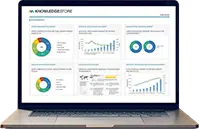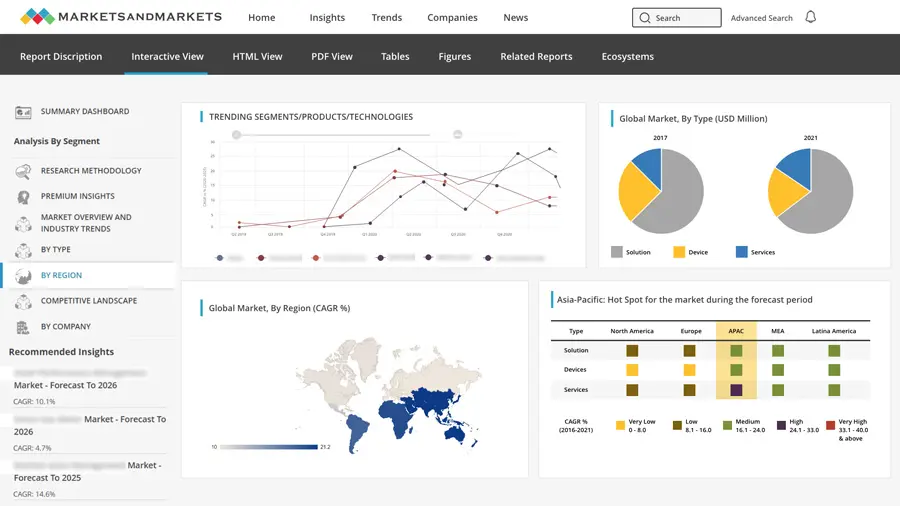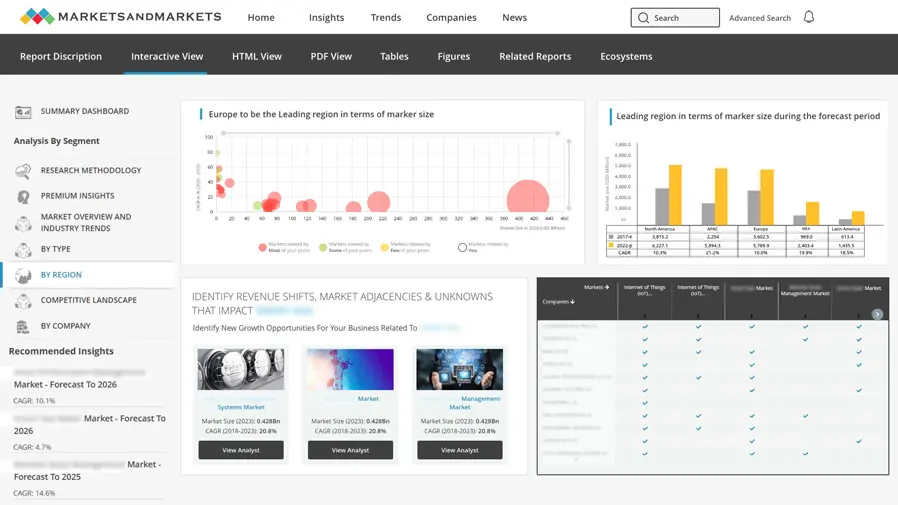Thrombosis Drugs Market by Type, Product, End-Use Industry and Region - Global Forecast to 2033
Market definition of Thrombosis Drugs
Thrombosis drugs refer to medications that are used to prevent or treat blood clots that form inside blood vessels, which can lead to serious medical conditions such as heart attack, stroke, deep vein thrombosis (DVT), and pulmonary embolism (PE). These drugs work by either preventing the formation of clots (anticoagulants) or dissolving existing clots (thrombolytics). The market for thrombosis drugs includes both prescription and over-the-counter medications.
Market Outlook for Thrombosis Drugs Market
The market outlook for thrombosis drugs is positive and is expected to experience significant growth in the coming years. This is primarily due to the increasing prevalence of thrombosis-related conditions, such as deep vein thrombosis and pulmonary embolism, as well as the growing aging population, which is at a higher risk for developing blood clots.
Moreover, the rising incidence of lifestyle-related diseases, such as obesity, diabetes, and cardiovascular diseases, is also contributing to the growth of the thrombosis drugs market. Lifestyle-related diseases increase the risk of thrombosis and hence, require the use of thrombosis drugs to prevent or treat blood clots.
In addition, the development of novel oral anticoagulants and the increasing adoption of these drugs due to their effectiveness, safety, and ease of use is expected to drive the growth of the thrombosis drugs market. The emergence of biosimilars is also expected to increase competition and lower the cost of thrombosis drugs, making them more accessible to patients.
However, the high cost of novel oral anticoagulants and the presence of stringent regulatory requirements for drug approval may pose a challenge to the growth of the thrombosis drugs market. Furthermore, the availability of alternative treatments and the risk of adverse effects associated with thrombosis drugs may also hinder market growth.
Overall, the thrombosis drugs market is expected to grow at a steady pace in the coming years, driven by factors such as increasing prevalence of thrombosis-related conditions, rising incidence of lifestyle-related diseases, and the development of novel drugs.
The current size of the Thrombosis Drugs Market varies depending on the source and the methodology used for market sizing.
Thrombosis Drugs Market Dynamics
Drivers:
Increasing prevalence of thrombosis diseases, especially in the aging population, is driving the demand for thrombosis drugs.
Advancements in thrombosis drug development and delivery technologies are also driving the market growth.
Increasing healthcare expenditure and rising awareness regarding thrombosis diseases and their treatment options are also boosting market growth.
The growing demand for thrombosis drugs in emerging economies, coupled with favorable government initiatives and reimbursement policies, is expected to drive market growth.
Restraints:
High costs associated with thrombosis drugs and treatment options may hinder the market growth.
Stringent regulatory guidelines and complex drug development procedures may limit the entry of new players in the market.
Adverse side effects associated with thrombosis drugs may also hamper market growth.
Trends:
Increasing focus on the development of personalized medicine for thrombosis treatment is a major trend in the market.
The introduction of direct oral anticoagulants (DOACs) is a significant trend in the thrombosis drugs market, providing a more convenient and effective alternative to traditional anticoagulants.
Increasing adoption of combination therapy for thrombosis treatment is another trend in the market.
Thrombosis Drugs Market By Vertical, Product and By Region
The thrombosis drugs market is expected to be driven by the increasing incidence of thrombotic diseases, such as deep vein thrombosis and pulmonary embolism, across all age groups, as well as the growing demand for novel and effective therapies to prevent and treat these diseases. The market is also likely to be fueled by the rising geriatric population, which is more susceptible to thrombosis, and the increasing prevalence of lifestyle diseases such as obesity, diabetes, and cardiovascular diseases.
In terms of products, anticoagulants are expected to dominate the thrombosis drugs market during the next 3-5 years due to their widespread use for the prevention and treatment of thrombotic diseases. Within the anticoagulants segment, direct oral anticoagulants (DOACs) are expected to witness significant growth due to their superior efficacy and safety profiles compared to traditional anticoagulants such as warfarin.
In terms of verticals, the hospital segment is expected to dominate the market due to the high incidence of thrombotic diseases among hospitalized patients, particularly those undergoing surgery or immobilization. However, the homecare segment is also expected to witness significant growth due to the increasing trend of home-based treatment and the development of self-administered anticoagulant therapies.
Geographically, North America is expected to dominate the thrombosis drugs market during the next 3-5 years due to the high incidence of thrombotic diseases in the region, the presence of a well-established healthcare infrastructure, and the availability of advanced diagnostic and treatment options. However, the Asia-Pacific region is expected to witness the highest growth due to the large population base, increasing incidence of thrombotic diseases, and the growing focus on developing affordable and accessible healthcare solutions in emerging economies such as India and China.
Major players operating in the Thrombosis Drugs Market
- Pfizer Inc.
- Bristol-Myers Squibb Company
- Johnson & Johnson Services, Inc.
- Sanofi S.A.
- GlaxoSmithKline plc
- AstraZeneca plc
- Boehringer Ingelheim International GmbH
- Daiichi Sankyo Company, Limited
- Bayer AG
- Portola Pharmaceuticals, Inc., among others.
Key segmentation of Thrombosis Drugs Market
By Drug Class:
- Antiplatelet agents: aspirin, clopidogrel, prasugrel, ticagrelor, etc.
- Anticoagulants: heparin, warfarin, dabigatran, rivaroxaban, apixaban, edoxaban, etc.
- Thrombolytics: alteplase, reteplase, tenecteplase, etc.
By Disease Type:
- Arterial thrombosis: myocardial infarction, stroke, peripheral arterial disease, etc.
- Venous thrombosis: deep vein thrombosis, pulmonary embolism, etc.
By Route of Administration:
- Oral
- Parenteral
By Distribution Channel:
- Hospital pharmacies
- Retail pharmacies
- Online pharmacies
By Region:
- North America
- Europe
- Asia Pacific
- Latin America
- Middle East and Africa
















Growth opportunities and latent adjacency in Thrombosis Drugs Market